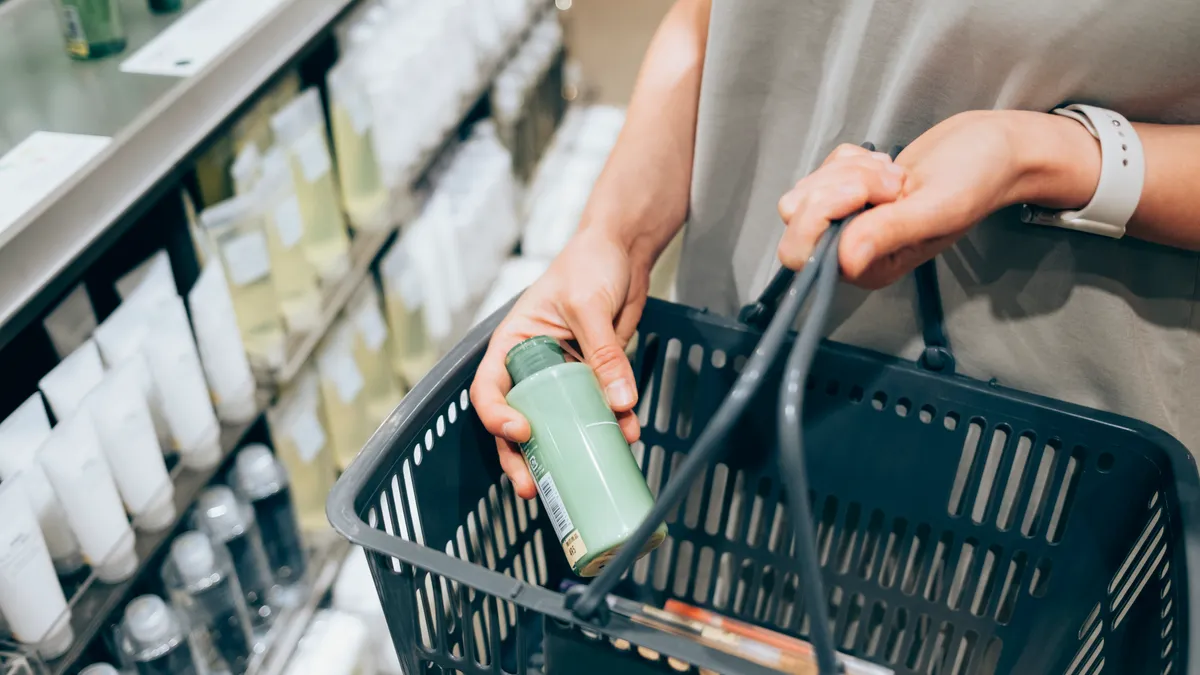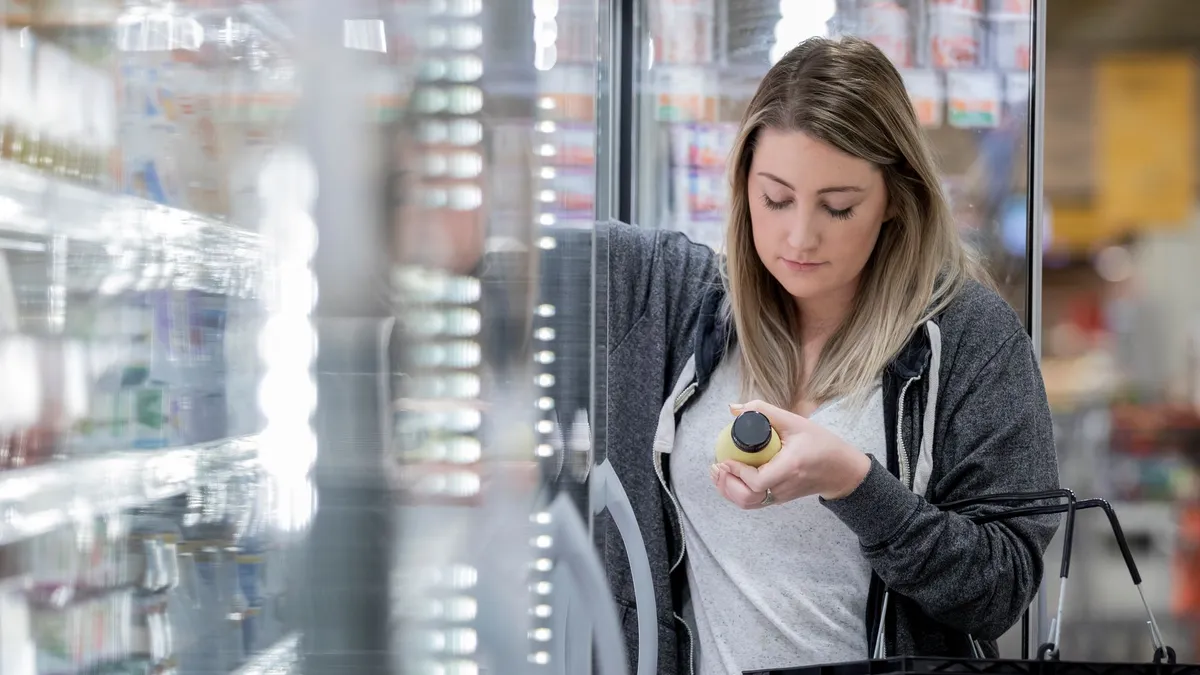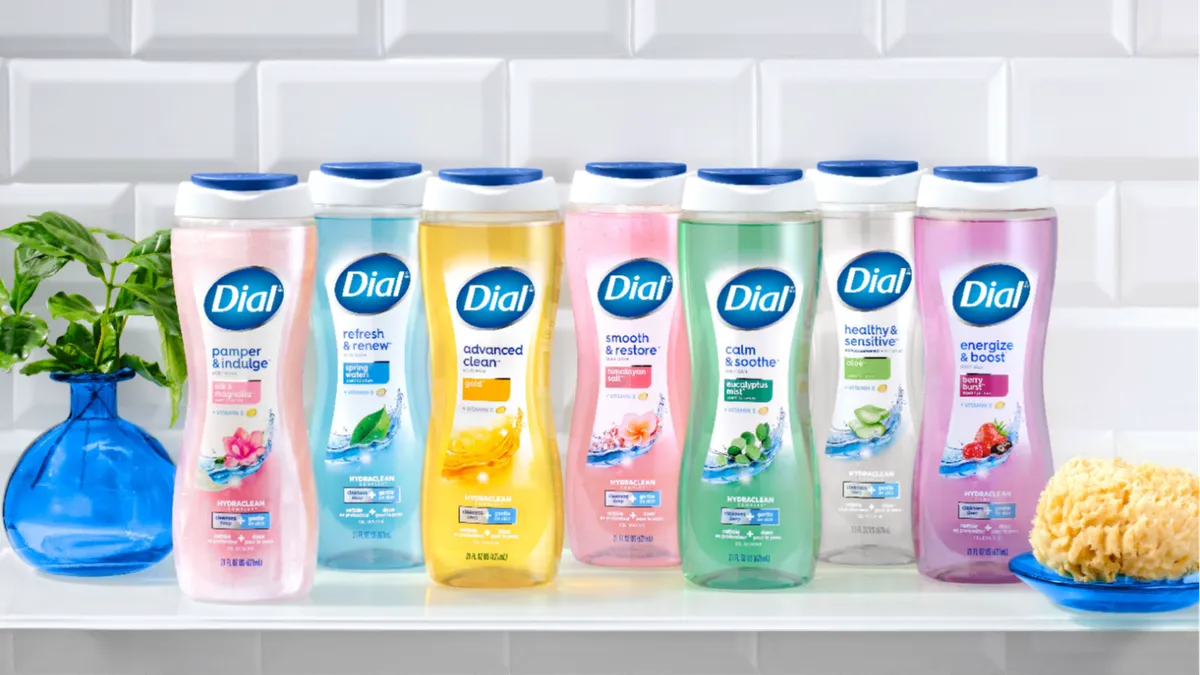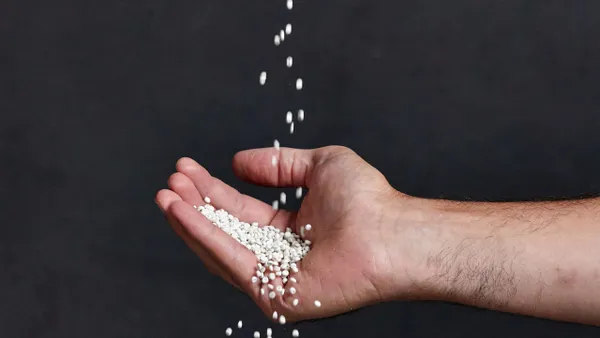More beauty companies are making a concerted effort to reduce the carbon footprints of their packaging by working with partners to use more sustainable materials, reduce the weight of packaging components and use postconsumer recycled content.
L’Oréal aims to achieve carbon neutrality by 2025, and make packaging either from entirely recycled or bio-based sources by 2030. Estée Lauder has said that by 2025, 75% to 100% of their products will meet at least one of the following classifications: “recyclable, refillable, reusable, recycled, or recoverable.” Smaller cosmetics companies are also pursuing similar goals, or seeking to gain market share with sustainability-driven products.
“It’s really nice to see that companies are taking this initiative to start thinking about packaging as a bit of the problem,” said Lara Dresser, a carbon reduction scientist at consulting firm Tunley Environmental, noting the importance of “making sure that the products, the materials are recyclable at the end, not just recycled at the start.”
U.K.-based Tunley works with businesses to help assess the sources that produce most of their emissions and then provide solutions for reduction. In beauty packaging, the majority of emissions come from the choice of materials and where they’re sourced.
New materials
A newer example of a lower-emissions packaging material is mPackting’s mBlack, which is made of recycled wood waste. Paolo Minelli started mPackting in 2022 as an offshoot of his family’s wood manufacturing company in Italy, Minelli Group, after deciding that the existing options for beauty packaging were not sustainable or sufficient enough. The goal was to make complete packaging products, rather than just components.
The mBlack product is made from wood waste, which is processed through pyrolysis and then compounded with polymers. The material, naturally, is black. It’s used for makeup containers such as compacts, lipstick tubes and jars. About half of mPackting’s customers are major global beauty brands and the rest are smaller brands.
Minelli likens using mBlack to buying a portion CO2 that would otherwise be in the air. “If you buy a component made of mBlack, you’re effectively buying a stock of soot,” he said.
Brands such as Mob Beauty, which was launched by a veteran of MAC Cosmetics, are using pulp-based materials for packaging.
“We thought, what if the primary packaging doesn't create an end-of-life problem?” explained Mob’s co-founder and CEO Victor Casale, referring to the brand’s pulp-based packaging. “It can be recycled, it can be composted. It can be deteriorated at the side of the road or in an ocean or a garden back into dirt.”
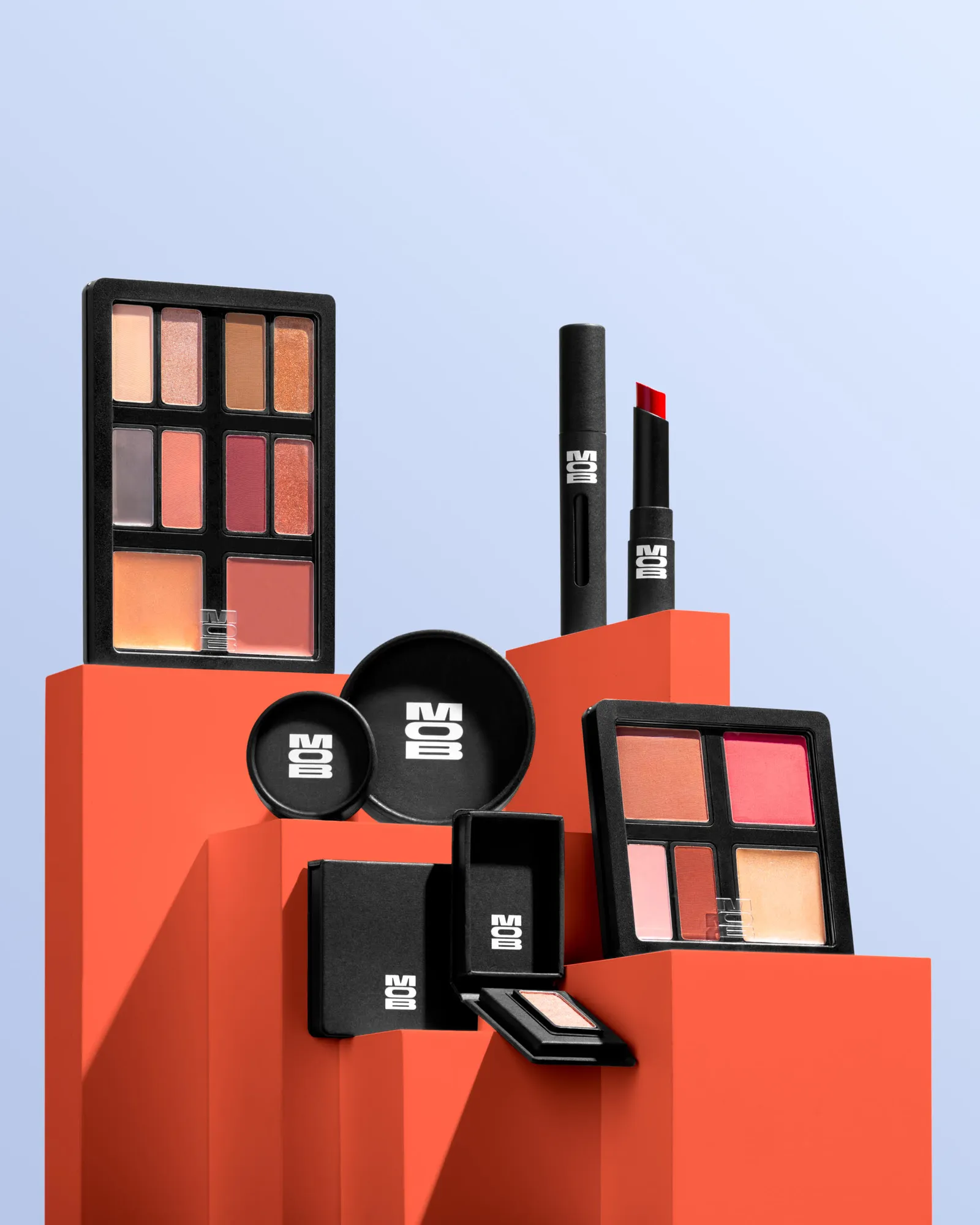
To help the industry reduce waste on a larger scale, Casale and Mob partnered with “clean beauty” retailer Credo Beauty to form Pact Collective, a nonprofit group that takes back hard-to-recycle beauty packaging by mail and through collection bins. Pact counts 150 brands such as L'Oréal, Fenty Beauty and Westman Atelier as participants.
In addition to encouraging customers to reuse and recycle through Pact, Mob specializes in vegan formulations and easily recyclable or recycled packaging. All of Mob’s packaging is made from PET and polypropylene resin, with at least 50% PCR materials. The brand even lists all the recycled material details on its website. All of the outer packaging, shipping boxes, labels and packing components are made of 100% recycled materials from Forest Stewardship Council-certified suppliers.
In turn, packaging manufacturers are responding to this demand for PCR and lighter weights among these types of companies. Karan Puri, vice president of sales for home, health and beauty at Berry Global, said these types of materials are a growing focus for customers.
At Berry, Puri’s team focuses on closures, bottles, pumps, aerosol overcases and tubes. It often uses HDPE for applications that need to be more sturdy, and LDPE for ones that need to be softer or more flexible. Currently, Berry is working on a project to reduce the profile of caps and tubes.
“You can go as much as 26% less material in the cap and maybe as much as 20% less material in the tube to make it more sustainable,” said Puri.
This lightweighting process, which can reduce the carbon footprint of packaging, is gaining traction among brands. One example of this is “clean beauty” brand Ilia, which recently redesigned the tube for its Limitless Lash Mascara. The company said the new lighter tube reduces carbon emissions by 46% and waste by up to 20% when compared with previous packaging.
This method is comparable to lightweighting trends in plastic water bottles and other packaging, but also comes with other considerations. Because these changes can affect the durability of a packaging component, Puri said they must be done smartly and in a way that retains sufficient quality.
“You still have to maintain fit and form,” Puri emphasized.
Recycling considerations
While reducing or redesigning plastic is often considered a good option to improve sustainability, it also depends on how the product is managed once a consumer is done with it.
“When we think about using materials, we're not just thinking about its initial embodied carbon, we also think about how you're going to get rid of it at the end, which often has quite a big impact on carbon emissions from that material,” said Dresser.
Many personal care and cosmetics products also feature combinations of plastic and other materials that are not easy to recycle when combined. For example, pump mechanisms are often made of plastic with a metal spring inside. In response, Berry has created a pump that features a plastic spring so it’s more recyclable.
While consumers are increasingly mindful about the sustainability of their purchases, there is still no guarantee they will recycle packaging as brands may have intended.
“A brand can have the best package which is 100% PCR, but if the consumer doesn't care for it, how does it matter at that point if they're still not going to recycle it?” Puri said.
Casale believes that education is paramount to help consumers properly recycle or reuse a product.
“There has to be consistent messaging, we have to educate the consumer,” he said. “If you have the right information, you're going to change behavior.”
While consumer behavior is a factor, sources said that beauty brands still bear the most responsibility for helping to reduce CO2 emissions from their packaging.
“When you talk about packaging and trying to be green,” said Puri, “someone has to lead the charge.”


